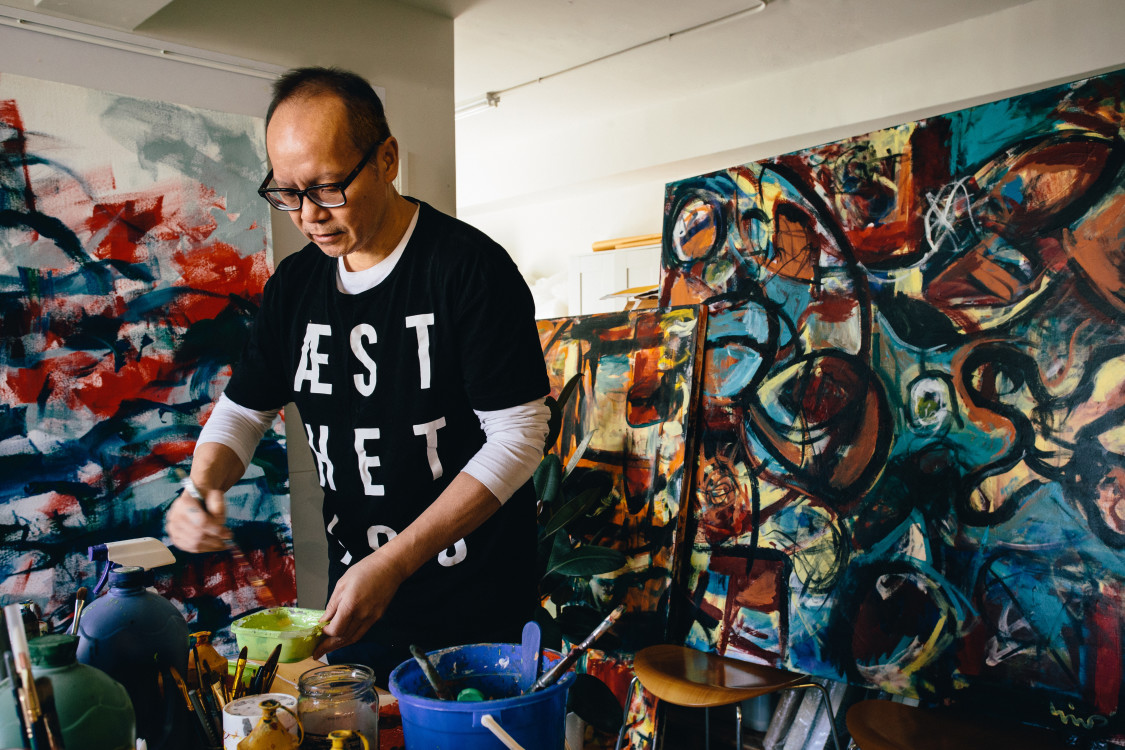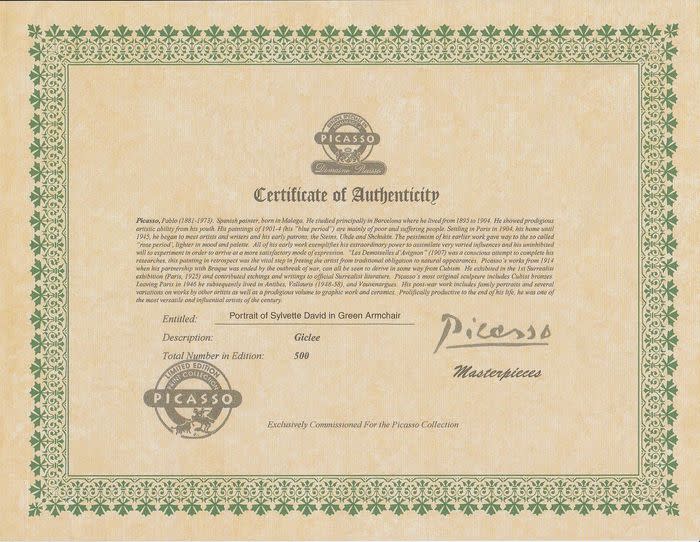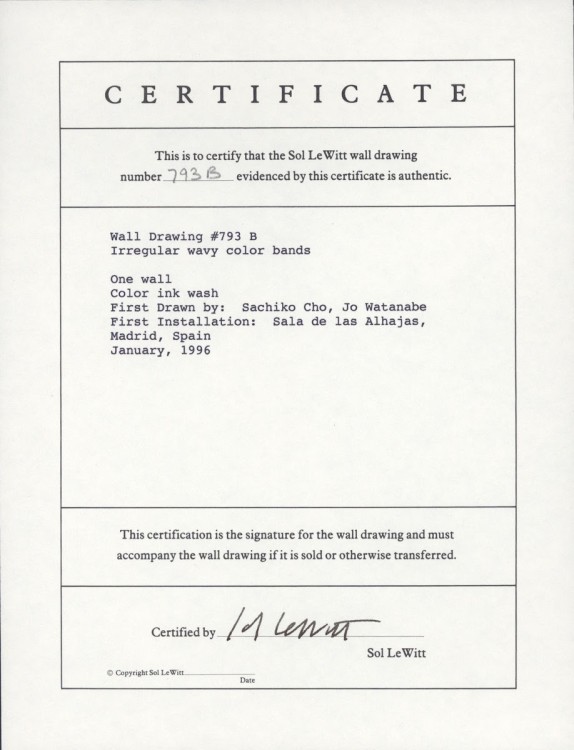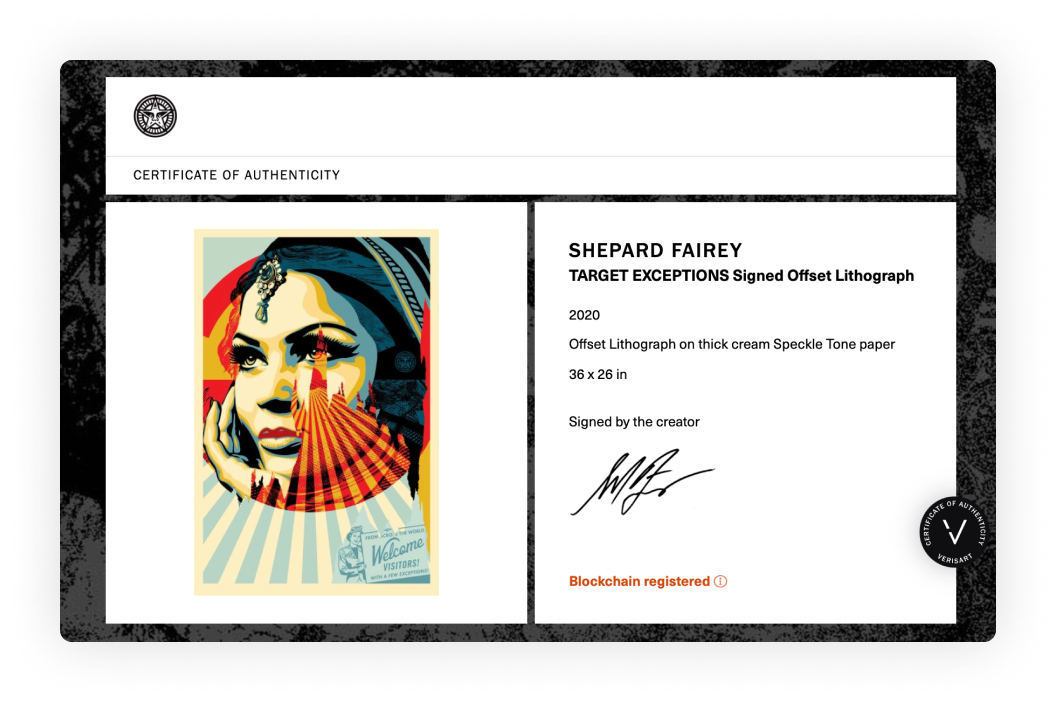Banksy 2
Fake Banksy NFTs: Why Are Certificates of Authenticity Important?
Many people believe that NFTs prove the authenticity of artworks. But NFTs aren’t foolproof and stricter authentication measures are the only way of preventing fraudulent works from entering the market.
On August 31, a page added to Banksy’s official website directed users to an NFT entitled ‘Great Redistribution of the Climate Change Disaster’ which appeared to be the street artist's first foray into the world of NFTs. An unwitting collector enthusiastically purchased the NFT artwork for over $335k, only to later learn that he had been drawn in by an elaborate scam and have the funds returned to his account.
Many people believe that NFTs prove the authenticity of artworks. But NFTs aren’t foolproof and stricter authentication measures are the only way of preventing fraudulent works from entering the market.
Fraud has plagued the art world for centuries. One way of establishing the authenticity of artworks is through a Certificate of Authenticity, or COA. Read on to learn more about what they are and why they’re essential for combating fake attribution in the art and digital collectibles market.
What Are Certificates of Authenticity?
Certificates of Authenticity are official documents which accompany an artwork as it passes from artist to collector, gallery to auction house. They signal to prospective owners that the work is genuine; guaranteeing the integrity of the work and establishing trust between buyers and sellers. Although most commonly associated with fine art, the application of COA extends beyond the art world to diamonds, luxury fashion, antiques and digital collectibles.
Certificates of authenticity provide important information about the work - At their most basic, they document details about the work such as the creator's identity, title, dimensions, year and materials of production. They might also state the total number of editions produced and any other relevant information needed for the buyer to make an informed assessment about the current and future value of the artwork.

They provide a dependable source or origin for artworks and creations - Certificates of Authenticity can act as historical records of sales, like a transaction receipt. This is especially important for high-profile creators whose works have passed through multiple owners. Not only does this help determine the relative value of that work as it appreciates over time, but it's also key for providing proof of authorship and legitimate attribution.

Certificates of authenticity are not new in the arts - In fact, paper-based certificates have been used to verify the authenticity and ownership of artworks for centuries. But paper-based certificates can easily be lost, tampered with or forged. In the United States, a number of contemporary artists’ foundations stopped issuing certificates after a succession of lawsuits by collectors claiming that works carrying certificates were inauthentic.
84% of wealth managers said that authenticity, provenance, and forgeries pose the greatest risk to the reputation of the art market, according to a 2019 Deloitte Art & Finance Report. Unfortunately, it has become common practice for sellers to use certificates to elevate the prestige of fraudulent works and falsely reassure buyers. Although buyers place a great deal of trust in these documents, their production and contents are not regulated.
Establishing authenticity and authorship of content on the Internet is extremely difficult - With the rise of e-commerce there has been a proliferation of fake prints circulating on major online marketplaces. Artists face a difficult time establishing legitimacy and authority and this has contributed to an eroding sense of trust between buyers and sellers.

Increasingly, artists have taken to producing more work in the digital realm - 2021 is the year of NFTs, and there has been a tremendous shift toward online arts sales during the pandemic. According to the Hiscox Online Art Trade Report, 80% of online art buyers want authentication certificates to become “standard practice” for art and collectibles sold online.
Inevitably, there has been an increased need for clear industry standards and for transactions and information sharing to be transparent, accessible and trusted processes. While NFTs do provide transparency around transactions, they don’t always verify the identity of the person minting the NFT. The fake Banksy NFT and other crypto-counterfeiting scams outlined in the Wall Street Journal, show us that this is not enough. Identity verification is needed to confirm the identity of the artist and help prevent the sale of counterfeit digital goods.

Leveraging New Technologies
Blockchain provides more of a secure way of creating, storing, and transferring certificates of authenticity - Digital ledgers can hold time-stamped documents which cannot be altered, replicated or tampered with in any way. Registering Certificates of Authenticity securely on the blockchain reduces the risk of fake certificates being issued by illegitimate sellers. Here at Verisart, we also verify the identity of any creator or business issuing Certificates of Authenticity to ensure they are who they claim to be. When certifying NFTs, creators are also required to link the wallet which owns their NFT to their Verisart account, ensuring a clear link between the wallet address and verified artist.
Blockchain can maintain a digital record of transactions on its public ledger - Creators can keep track of their creations as they change ownership over time, resulting in improved traceability of provenance and transactional data. Because the blockchain is a public record, anyone can verify the existence of a certificate and check provenance instantly if they have access to the certificate. This provides enhanced asset management solutions and ensures more trusted transactions between buyers and sellers.

A Verisart certificate allows creators to tell the story of the work - Adding documents relating to the artwork in a Verisart certificate wraps the work in a layer of context directly from the artist. Any edits or changes to the certificate will be recorded on the blockchain and captured in the history of the certificate.
With more and more artists taking to producing and selling their work online, new systems need to be in place to address this shift from analog to digital art forms, and from physical to online sales. In an increasingly digital world, buyers and sellers are less likely to know each other and therefore need new ways of establishing legitimacy and trust. As the industry continues to advance and new technologies are adopted, Certificates of Authenticity are regaining their rightful place as a guardian of the trade.
We are an international team of art and technology professionals challenging the status quo of the art and collectibles market. Head over to our main page to find out more about creating free Certificates of Authenticity, securely registered on the blockchain.
References: